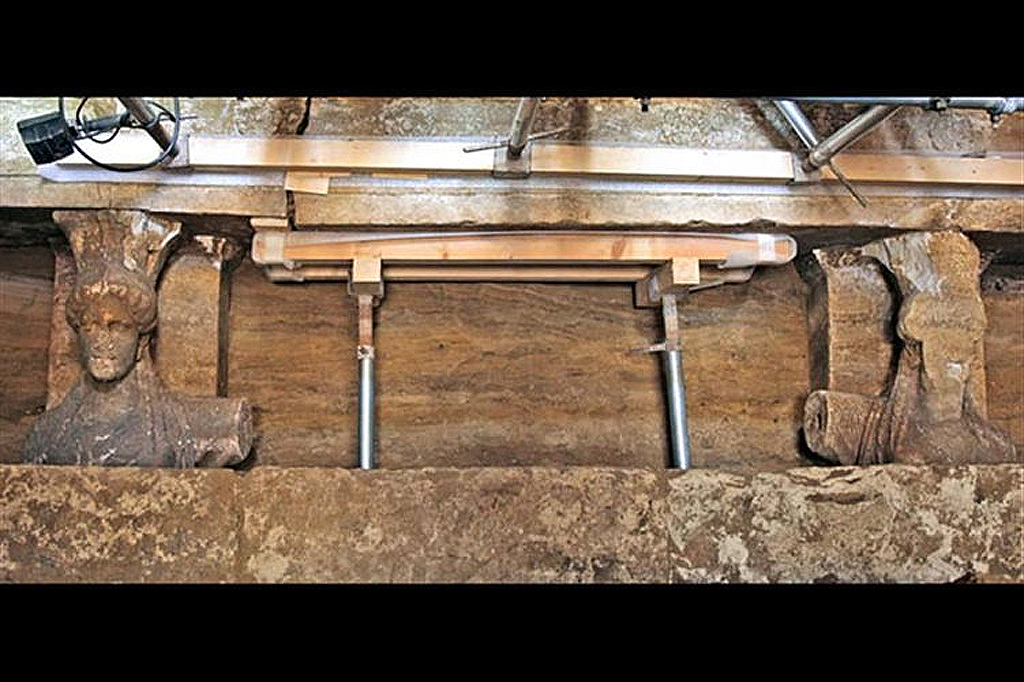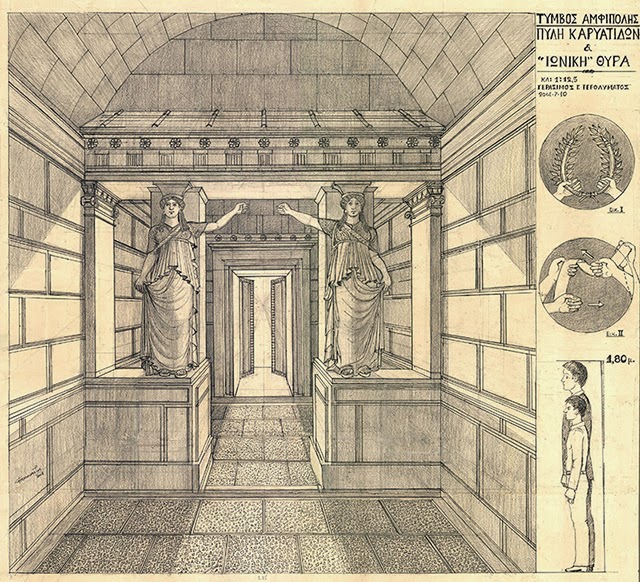antipater
Not much of Amphipolis here, it is not even about a lion statue.ἐκ ποτέ τις φρικτοῖο θεᾶς σεσοβημένος οἴστρῳ
ῥομβητοὺς δονέων λυσσομανεῖς πλοκάμους,
θηλυχίτων, ἀσκητὸς ἐϋσπείροισι κορύμβοις,
ἁβρῷ τε στρεπτῶν ἅμματι κεκρυφάλων,
ἴθρις ἀνήρ, κοιλῶπιν ὀρειάδα δύσατο πέτραν,
Ζανὸς ἐλαστρησθεὶς γυιοπαγεῖ νιφάδι.
τὸν δὲ μέτ᾽ ἀρρίγητος ἐπείσθορε ταυροφόνος θήρ,
εἰς τὸν ἑὸν προμολὼν φωλεὸν ἑσπέριος:
ἀθρήσας δ᾽ εἰς φῶτα, καὶ εὐτρήτοισιν ἀυτμὰν
μυκτῆρσιν βροτέας σαρκὸς ἐρυσσάμενος,
ἔστα μὲν βριαροῖσιν ἐπ᾽ ἴχνεσιν ὄμμα δ᾽ ἑλίξας
βρυχᾶτο σφεδανῶν ὄβριμον ἐκ γενύων.
ἀμφὶ δ᾽ οἱ σμαράγει μὲν ἐναυλιστήριον ἄντρον,
ἄχει δ᾽ ὑλάεις ἀγχινεφὴς σκόπελος.
αὐτὰρ ὃ θαμβήσας φθόγγον βαρύν, ἐκ μὲν ἅπαντα
ἐν στέρνοις ἐάγη θυμὸν ὀρινόμενον
ἀλλ᾽ ἔμπας ἐρίμυκον ἀπὸ στομάτων ὀλολυγὰν
ἧκεν, ἐδίνησεν δ᾽ εὐστροφάλιγγα κόμαν
χειρὶ δ᾽ ἀνασχόμενος μέγα τύμπανον, ἐπλατάγησεν,
δινωτὸν Ῥείας ὅπλον Ὀλυμπιάδος
τὸ ζωᾶς ἐπαρωγὸν ἀήθεα γὰρ τότε βύρσης
ταυρείου κενεὸν δοῦπον ἔδεισε λέων,
ἐκ δὲ φυγὼν ὤρουσεν. ἴδ᾽ ὡς ἐδίδαξεν ἀνάγκα
πάνσοφος ἐξευρεῖν ἔκλυσιν Ἀίδεω.
Goaded by the fury of the dreadful goddess, tossing his locks in wild frenzy, clothed in woman’s raiment with well-plaited tresses and dainty netted hair-caul, a eunuch once took shelter ina mountain cavern, driven by the numbing snow of Zeus. But behind him rushed in unshivering a lion, slayer of bulls, returning to his den in the evening, who looking on the man, snuffling in his shapely nostrils the smell of human flesh, stood still on his sturdy feet, but rolling his eyes roared loudly from his greedy jaws. The cave, his den, thumders around him and the wooded peak that mounts nigh to the clouds echoes loud. But the priest startled by the deep voice felt all his stirred spirit broken in his breast. Yet he uttered from his lips the piercing shriek they use, and tossed his whirling locks, and holding up his great tambour, the revolving instrument of Olympian Rhea, he beat it, and it was the saviour of his life; the lion hearing the unaccustomed hollow boom of the bull’s hide was afraid and took flight. See how all-wise necessity taught a means of escape from death!

